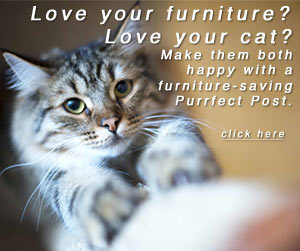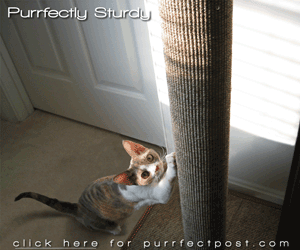Megacolon in Cats

Megacolon is a condition during which a cat's large intestine has an abnormally large diameter. When that happens persistently, it negatively affects the bowel motility.
The colon's regular job is to absorb water and store stool until defecation. When the muscle enlarges and doesn't move properly, stool builds up and doesn't come out. The colon may be up to four times larger than normal.
Causes of Megacolon in Cats
Megacolon happens when the nerves to the colon aren't working correctly. They don't stimulate the muscle to contract and move stool, which builds up and stretches the colon's diameter abnormally. There are a few causes of megacolon. They include:
- Idiopathic, which is megacolon of unknown origin
- Physical obstruction of the large intestine by a foreign body, massive hairball, or because of a pelvic fracture
- Spinal cord injury or disorder
- Anal sac or rectal disease
- Hip dislocation or fracture making defecation painful
Signs of Feline Megacolon
Signs associated with megacolon may be present for months or years in cats and can include:
- Chronic constipation (difficulty passing stool) or obstipation (no stool passed)
- Blood in the stool
- Low volume or infrequent stools
- Hard, dry stools
- Intermittent vomiting and inappetence
Diagnosis of Megacolon in Cats
In most cases, the owner of a cat with megacolon will notice that the cat is straining in the litter box, but no stool is coming out.
Note: Straining in the litter box, crying when in the litter box, or getting in and out of the litter box frequently is an emergency, especially in male cats. It may indicate a urinary tract obstruction rather than constipation or obstipation (complete lack of defecation).
When a vet examines a cat with megacolon, the doctor will be able to feel the extremely enlarged colon full of firm stool. An x-ray may help determine the cause, especially if a pelvic fracture or foreign body obstruction are involved.
Treatment of Megacolon in Cats
Most of the time, medical therapy of megacolon is attempted first. The veterinarian may use enemas, laxatives, stool softeners, and a high fiber diet. Exercise can stimulate colon movement, so encouraging play can help.
Note: Do not use an enema or give medications to your cat at home. Some human products are toxic to cats, and you should follow your veterinarian's instructions carefully if medication is necessary.
Sometimes, if those measures don't work, the cat is anesthetized for manual stool removal. This procedure does carry a risk of puncturing the colon's lining, which is more fragile and thinner during megacolon.
If medical treatment doesn't work, surgery may be necessary to remove the portion of the colon that isn't working (colectomy). After surgery, the cat may have soft stool. Without surgery, megacolon is usually a chronic condition, but some cats can be managed well with medication and diet.
You May Also Like These Articles:
Tips for Getting a Picky Cat to Eat Well
Notice: Ask-a-Vet is an affiliated service for those who wish to speak with a veterinary professional about their pet's specific condition. Initially, a bot will ask questions to determine the general nature of your concern. Then, you will be transferred to a human. There is a charge for the service if you choose to connect to a veterinarian. Ask-a-Vet is not manned by the staff or owners of CatHealth.com, and the advice given should not delay or replace a visit to your veterinarian.





